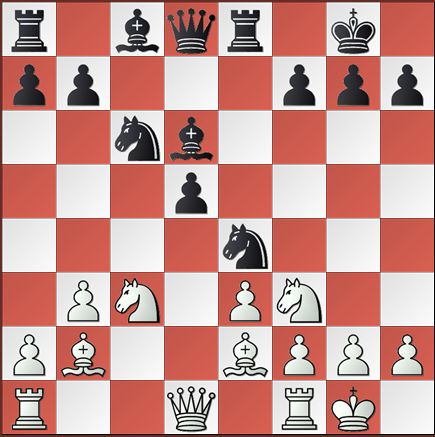The effectiveness of the middle game in chess, where the real battle of the minds takes place, depends to a great extent on the strength of the opening moves. It is the opening moves that set the stage for the middle game to flourish. A wrong pawn move or an ineffective bishop in the opening stage will have its serious consequences on the middle game. One of the outcomes of an opening, which can either be very effective if used prudently or might turn out to be a hindrance, is the isolated queen pawn. In some of the games, after the initial exchange of pawns in an effort to gain control over the center, an isolated queen pawn might remain in the board. Isolated queen pawn refers to the black pawn in d5 or a white pawn in d4 without any pawn support in either “c” file or in “e” file.
The unique features of the isolated queen pawn either in “d5” or in “d4” is that the square immediately in front of the square gains magical properties. Since the pawn is isolated, there will be not be any pawn either in c file or in e file to attack the square in front of the isolated queen pawn, and as such the square “d4” or “d5”, as the case may be, can be occupied by any piece and reap the benefits of that square.
Let us try to understand the effectiveness of the isolated queen pawn and its importance with the help of the following example played between two grandmasters. This is the position in the game after 12 moves. It is the turn of black to make his 12th move.

The Isolated Queen Pawn in this case is the black pawn at d5. As stated above, the “d4” square in front of the isolated queen pawn assumes significance, which is protected for now by the Black Knight at c3.
White, for its part, can either capture the black pawn at d5 using its Knight at c3 or move the Knight to b5 – Nb5 – to protect the d4 square.
It is the turn of the black to move now.
| 12. | …. | Ba3 |
| 13. | Bxa3 | Nxc3 |
| 14. | Qc2 | Nxe2+ |
| 15. | Qxe2 | Bg4 |
| 16. | Bb2 | d4 |
The brilliant play by Black in this context helped him to gain major advantage, and White, despite having three pieces threatening the d5 and d4 squares, could not do anything worthwhile to gain control over these squares.
| 17. | h3 | d3 | Now this last move by black to d3 virtually sealed the game in his favor as his pieces are well developed and the black pawn in d3 is a huge advantage for Black. |
The game proceeded as follows and reached its normal conclusion – victory to black over white.
| 18. | Qd2 | Bxf3 |
| 19. | gxf3 | Ne5 |
| 20. | Bxe5 | Rxe5 |
| 21. | Kh2 | Qd7 |
| 22. | Rg1 | Rc8 |
| 23. | Rad1 | Rd5 |
| 24. | e4 | Qd6+ |
| 25. | Kh1 | Rd4 |
| 26. | Rc1 | Rxc1 |
| 27. | Rxc1 | h6 |
| 28. | Qc3 | d2 |
| 29. | Rd1 | Qd7 |
| 30. | Kg2 | Rd6 |
| 31. | Qe3 | Qb5 |
| 32. | f4 | Rd3 |
0 – 1
Effective utilization of the isolated queen pawn is one of the hallmarks of the middlegame and should be in the armory for gaining control over the game.

